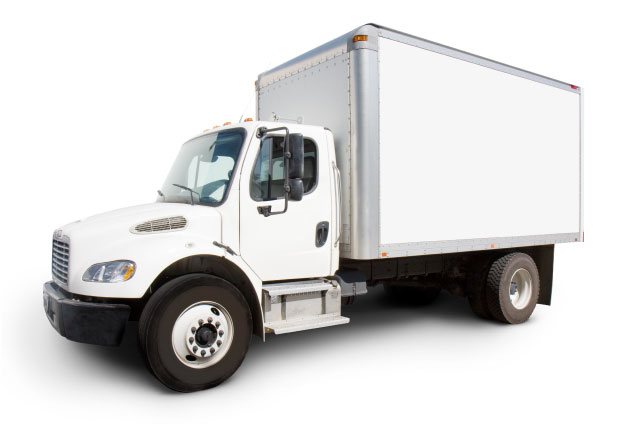Safely Lifting Heavy Items Alone: Tips and Tricks
Posted on 16/06/2025
Safely Lifting Heavy Items Alone: Tips and Tricks
Lifting heavy items alone is sometimes unavoidable--whether you're moving furniture, rearranging your workspace, or handling equipment on your own. However, the dangers of improper lifting can lead to severe back injuries, muscle strains, or even long-term damage. This comprehensive guide provides you with tips, techniques, and important safety considerations for lifting heavy objects by yourself without risking your health. Read on to discover how you can accomplish these tasks safely and efficiently.
Why Safe Lifting Is Important
Every year, thousands of people suffer injuries resulting from improper lifting techniques. The majority of these injuries occur at home, in offices, or on job sites where proper safety principles are not observed. Typical harms include:
- Lower back pain and disc injuries
- Strained muscles and torn ligaments
- Joint damage in the knees, hips, or shoulders

Assessing the Load: Is It Safe to Lift Alone?
Before attempting to move a heavy item by yourself, it's crucial to assess whether it's safe to do so. Consider these factors:
- Weight of the object: Is it something you can realistically handle?
- Shape and size: Awkwardly shaped items are harder to grip and may require a helper.
- Pathway obstacles: Is the route clear of tripping hazards?
- Personal capability: Are you physically fit enough to handle the object?
- Distance: Will you need to carry the item a long way?
If any of these factors raise red flags, it's safer to ask for assistance or use lifting equipment.
Preparing Your Workspace for Safe Lifting
One key to safely lifting heavy objects independently is preparing the lifting environment. Proper preparation reduces the risk of accidents and injuries.
- Clear the area: Remove rugs, cords, and furniture from your path.
- Check lighting: Make sure the route is well-lit and free from glare or shadows.
- Wear suitable clothing and shoes: Opt for comfortable, non-slip footwear and form-fitting clothes to prevent tripping.
- Mark your destination: Prepare the final location so you can put the item down quickly if needed.
Preparation is a critical step that is often overlooked but goes a long way in ensuring safety.
Correct Lifting Techniques When Alone
1. Plan Your Lift
Spontaneity can lead to mistakes. Visualize the entire lift: from picking up the item, moving it, and setting it down. If you anticipate trouble at any point, reassess.
2. Test the Load
Gently push or nudge the item first. If it feels too heavy to move with minimal force, do not attempt to lift it alone. Test for awkward weight distribution as well.
3. Adopt the Right Stance
- Stand close to the item, with feet shoulder-width apart for stability.
- Bend at the hips and knees (not your waist!) to lower yourself to the level of the load.
- Keep your back straight and look ahead--not down--to maintain a neutral spine.
4. Gripping and Lifting the Item
- Get a firm grip on the object using your whole hand, not just your fingers.
- Keep the load as close to your body as possible; distance increases strain on your back.
- Lift smoothly and steadily--avoid jerking or twisting motions.
- Rise with your legs, not your back. Push through your heels and tighten your core as you stand.
- If you need to turn, do so with your feet, not by twisting your upper body.
5. Setting Down the Object
- Squat by bending your knees and hips, not your waist.
- Keep your back straight.
- Lower the item slowly, keeping it close to your body.
- Release your grip only after the object is securely in place.
Essential Safety Tips for Lifting Heavy Items Alone
Here are proven guidelines to prevent injuries when lifting heavy items solo:
- Never rush: Slow, controlled movements are key to safety.
- Divide the load: If possible, split the item into smaller, manageable parts.
- Use tools: Employ dollies, hand trucks, lifting straps, or sliders to reduce strain.
- Wear gloves: For a secure grip and to avoid cuts or blisters.
- Take breaks: If moving multiple items, rest frequently to avoid fatigue.
- Don't block your view: Make sure you can see your path at all times.
Tools and Aids to Make Lifting Alone Easier and Safer
Lifting heavy items by yourself doesn't mean you can't use helpful equipment. Here are top tools that assist solo lifters:
- Furniture sliders: These under-the-item pads allow you to glide heavy loads across floors with minimal effort.
- Lifting straps: Also known as moving straps--they use leverage to shift weight to your legs and shoulders, reducing risk to your back.
- Hand trucks and dollies: Transport boxes, appliances, or other heavy objects over longer distances.
- Pry bars or lifting bars: For getting a handhold under items resting directly on the floor.
- Portable ramps: Help manage stairs or elevations without solo lifting.
- Step stools and ladders: For picking up items stored at heights or for precise placement.
Investing in these aids--even if you only move items occasionally--can prevent injury and make the job far easier.
Common Mistakes to Avoid When Lifting Alone
Learning how to lift heavy items safely on your own means avoiding these common errors:
- Twisting while lifting: Twisting under load is a leading cause of serious spinal injuries.
- Using your back instead of your legs: The mistake most people make is bending at the back rather than at the hips and knees.
- Lifting with a jerking motion: Sudden, uncontrolled movements dramatically increase risk of strain or dropping the item.
- Failing to ask for help: Pride isn't worth injury. If unsure, seek assistance.
- Carrying more than you can handle: There's no shame in making multiple trips or taking extra time.
Strengthening Your Body for Solo Lifting
Regular strength training and flexibility exercises can make solo lifting both safer and easier. Consider incorporating these into your fitness routine:
- Core exercises: Planks, bridges, and abdominal workouts support your spine during lifts.
- Leg strengthening: Squats, lunges, and calf raises build power for lifting and stabilizing.
- Flexibility routine: Stretches reduce risk of muscle strains and help maintain proper form.
- Grip strengthening: Squeezing tennis balls or using hand grip devices improves your hold on heavy objects.
A stronger, more flexible body increases your margin of safety dramatically when lifting heavy objects on your own.
When You Should NOT Try Lifting Alone
No amount of technique or preparation can replace asking for help when needed. Do not attempt to move heavy items solo in the following situations:
- The object exceeds your physical limit
- The shape is unwieldy or blocks your view
- You have a history of back, knee, or shoulder injuries
- The object must be moved down stairs or over uneven terrain
In these contexts, involving another person or using professional movers is the safest choice.
Alternate Lifting Techniques for Large or Bulky Items
Sometimes, traditional lifting isn't feasible for oversized items. Here are some special methods you can use:
- The high-low method: When moving long items, keep one end higher than the other for better control on stairs or through doorways.
- Rolling: If possible, roll cylindrical or round items rather than lift.
- Sliding: On tile or hardwood, use towels, blankets, or sliders to push or pull the load.
- Tip and pivot: Instead of lifting, tip one edge up and pivot the item in the desired direction.
Adapting your method to the situation helps minimize risk when lifting heavy or awkward objects alone.
After the Lift: Tips for Recovery and Injury Prevention
Once you've finished moving an item, take steps to ensure you haven't injured yourself:
- Stretch: Gently stretch your back, legs, and arms to release tension.
- Hydrate: Drink water to help muscles recover.
- Rest: Avoid strenuous activities for a while after heavy lifting.
- Monitor for pain: Pay attention to soreness, aches, or unusual discomfort.
If you notice any persistent pain, consult a medical professional promptly.
Key Takeaways: Safely Move Heavy Items Alone
- Plan and prepare: Assess the weight, clear your route, and gather any needed equipment.
- Use proper technique: Bend your knees, keep your back straight, and avoid twisting.
- Leverage tools: Employ sliders, dollies, or straps to make lifting manageable.
- Recognize your limits: Never risk your health; seek help if needed.
- Keep safety first: Your well-being is more important than saving a few minutes or money.
Remember: Safely lifting heavy items solo is about more than brute strength--it's a combination of planning, technique, and using the right equipment. By following these principles, you can protect yourself from injury and accomplish your tasks more efficiently.

Frequently Asked Questions - Lifting Heavy Items Alone
What is the best way to lift heavy objects by yourself?
Always use your legs, keep the load close to your body, avoid twisting, and move slowly. Where possible, use equipment to help.
Are there weight limits to what you should lift alone?
While there is no universal weight limit, experts typically recommend not lifting more than 50 pounds (about 23 kg) solo. However, your personal limit may be lower based on your fitness level and the shape of the object.
What if I feel pain after lifting something heavy?
Stop all physical activity, rest, and apply ice to sore areas. If pain persists or worsens, seek medical advice promptly to prevent further injury.
Conclusion
Lifting heavy items alone can be safe if approached with care, respect for your own limits, and the right knowledge. By implementing these tips and tricks, you will minimize your risk of injury and move even the heaviest objects with greater confidence and security. Always make safety your top priority.





